Creative Technologist.
Current MDes Mediums Student at the GSD.
Contact me
You can reach me at
alexiaasgari@gmail.com
Fall 2020 | Professor Jenny Sabin | Created in partnership with Yifei Peng (MDC '22) and Mounica Allani (MBA '21)
During the height of the pandemic, my team addressed the need for improved customization to improve the protective facemask. Through a reimagined process of recording photogrammetric facial scans from home, masks could be developed that accounted for individual differences between users and flexibility for dynamic facial expressions. We embraced the face as a non-rigid terrain, recording its movements for the development of an auxetic map, that that could be custom to the wearer.

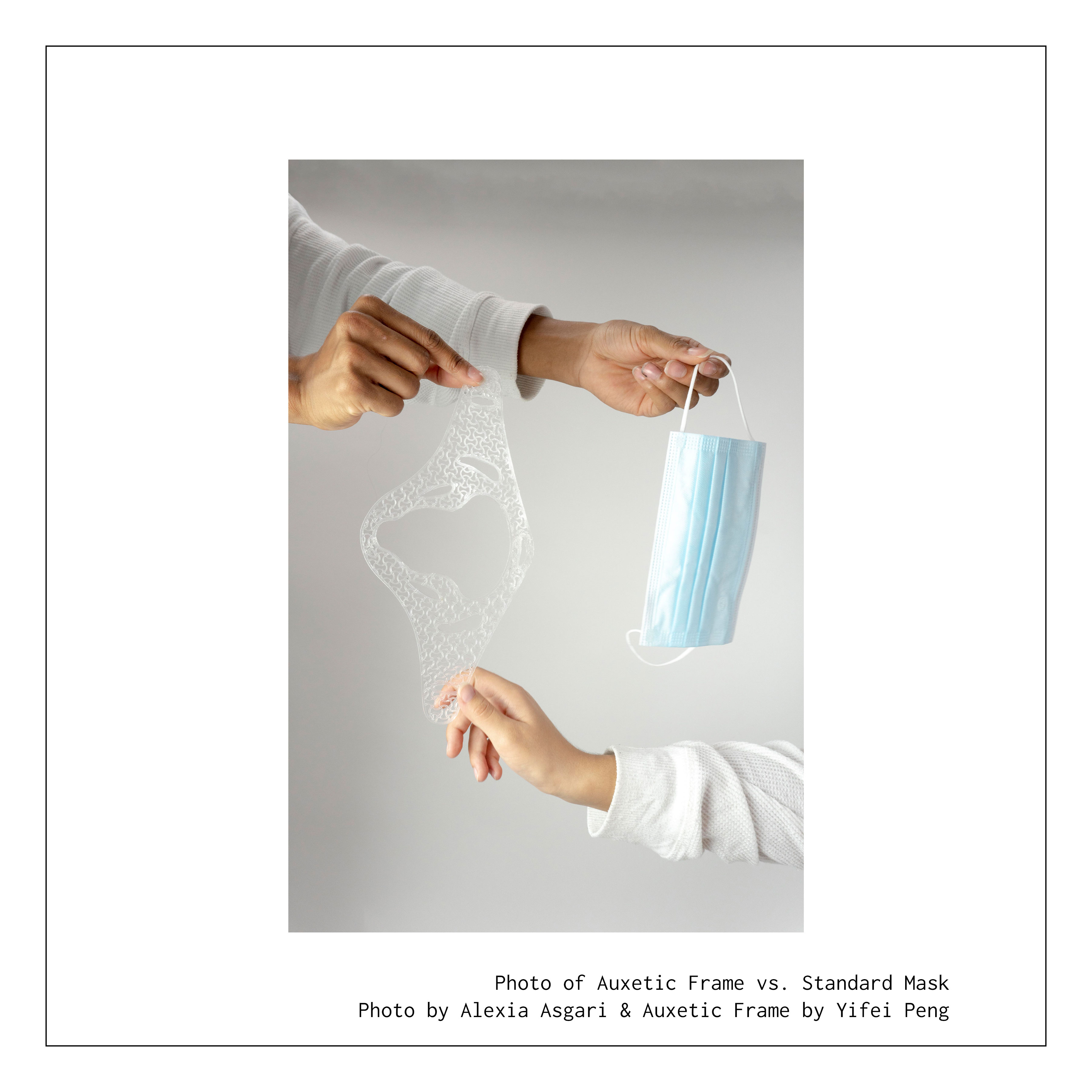


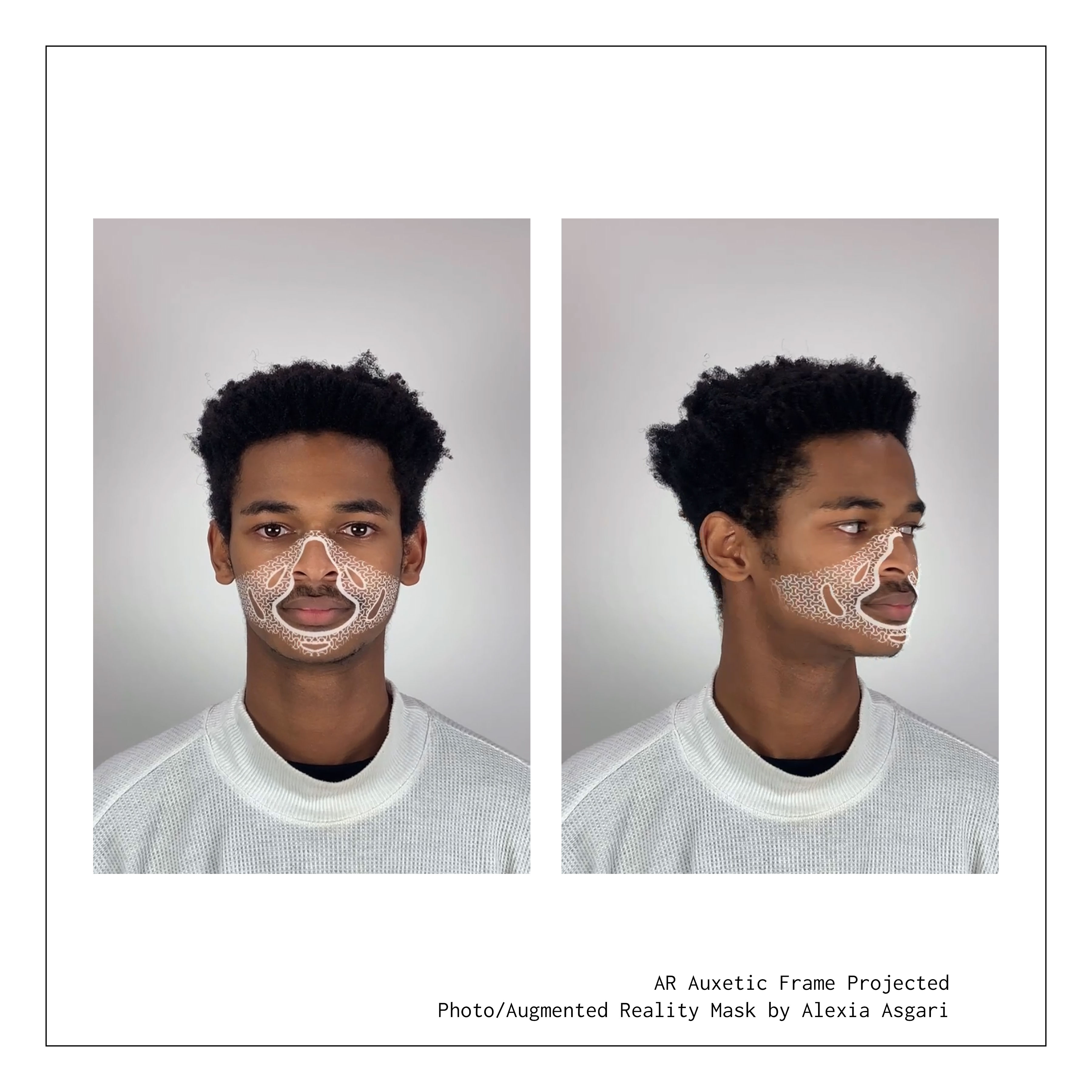

The FaceX custom frame is developed using both photogrametry and augmented reality to map points onto a user's face. By asking the user to display a variety of facial expressions, the variation of movement can be recorded. These movements are translated into a flexibility map which determines the knots and densities in the auxetic frame pattern. We explored a variety of pattern and knoting techniques as well as accessible methods of recording to develop an easily customizable and distributable 3D printed polypropelene frame.

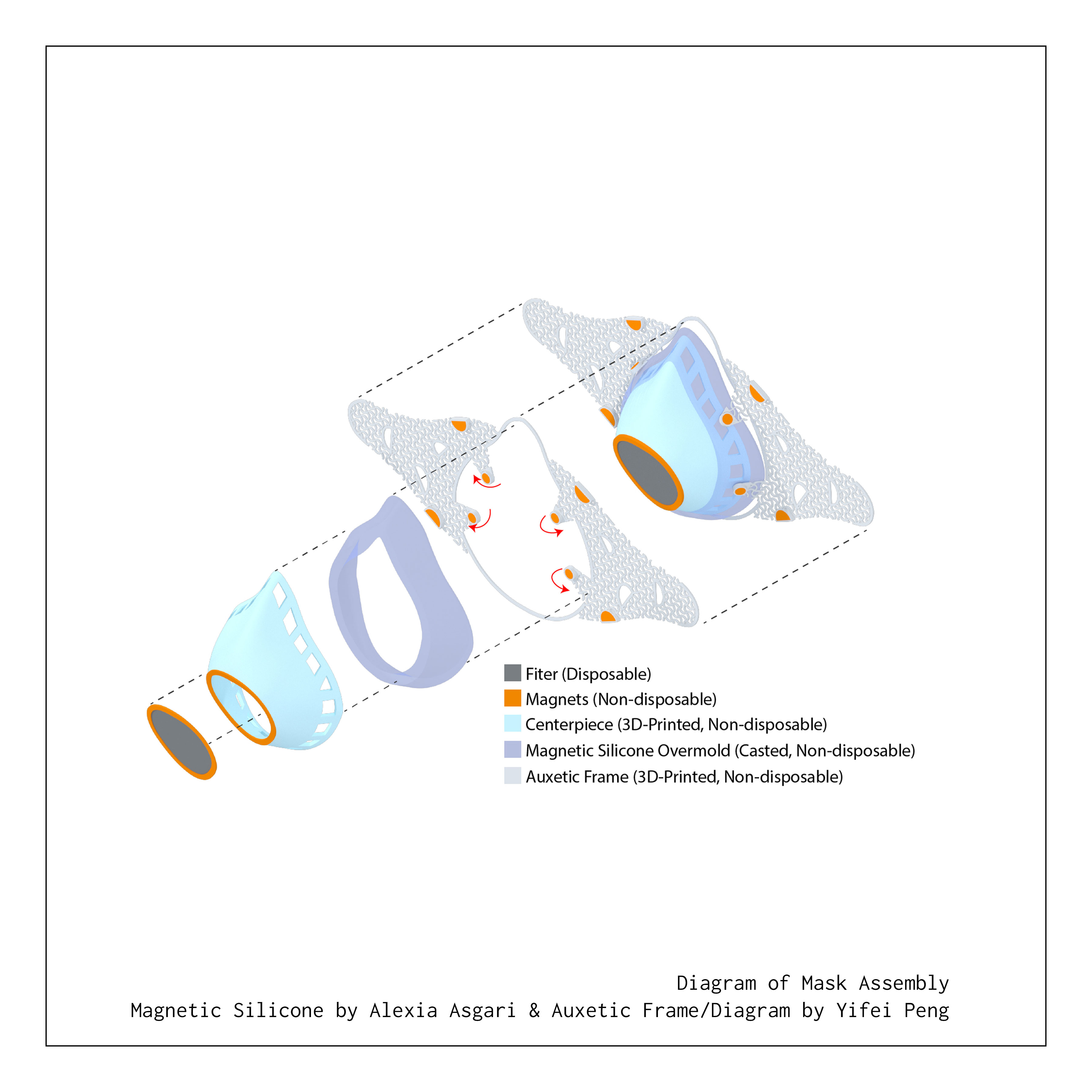

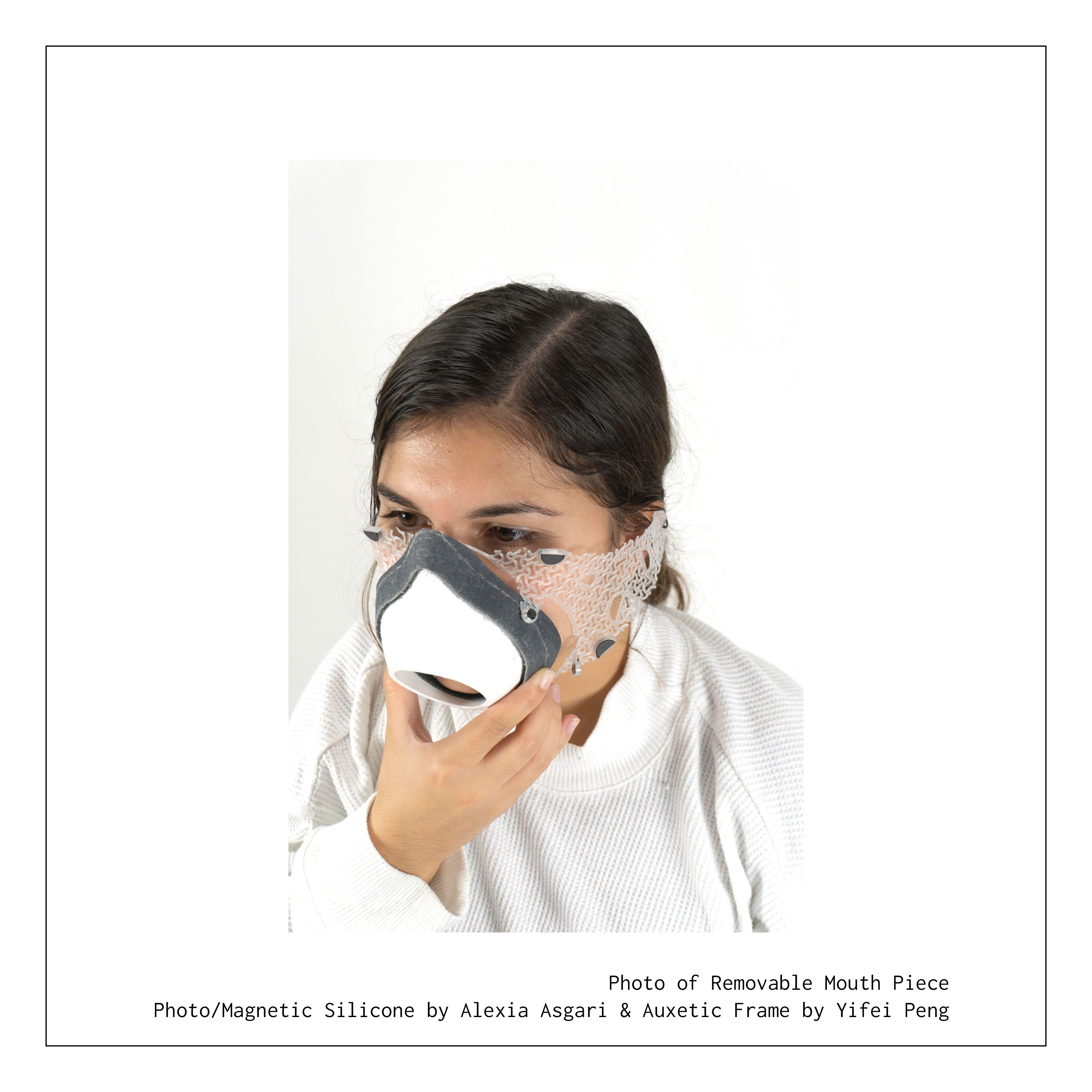
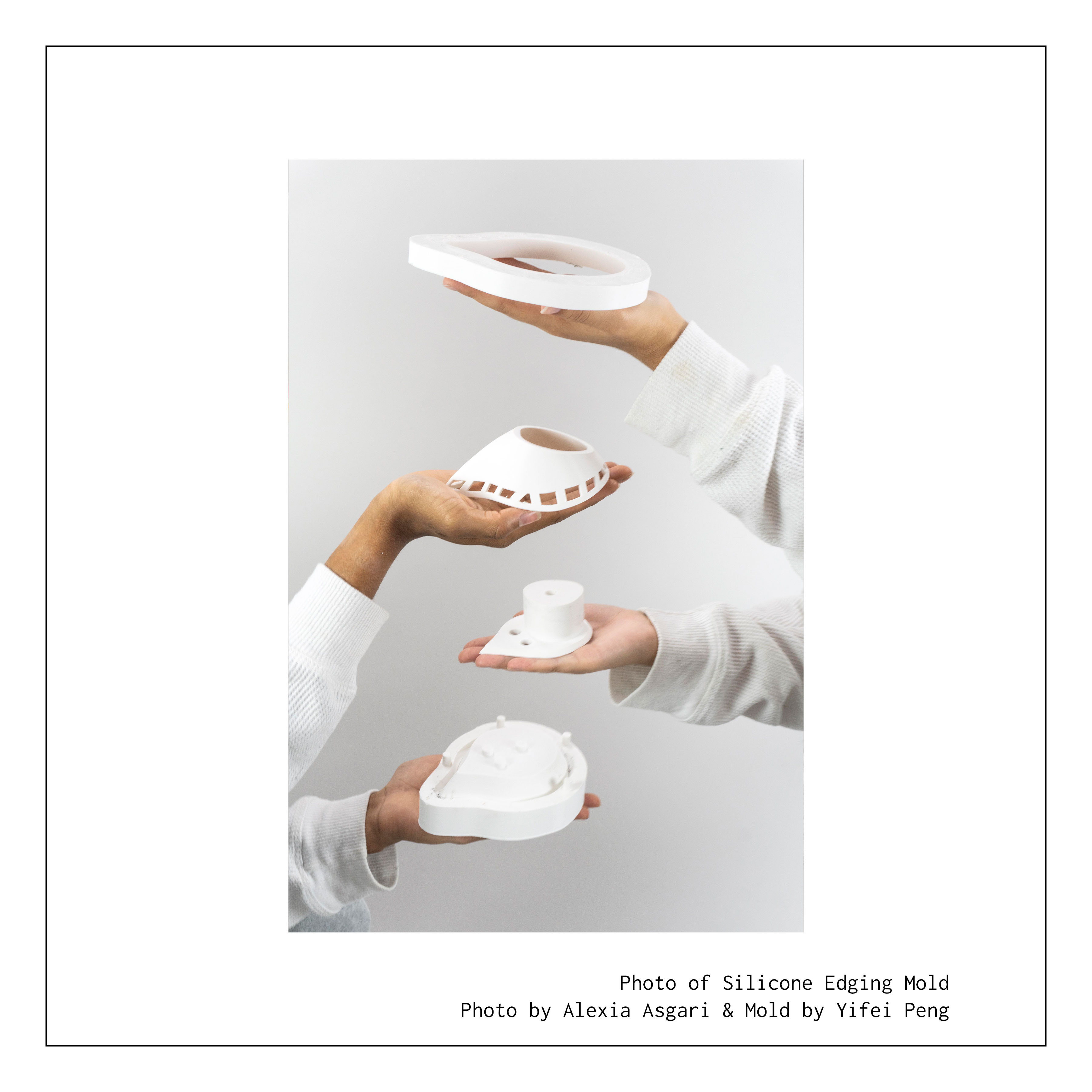
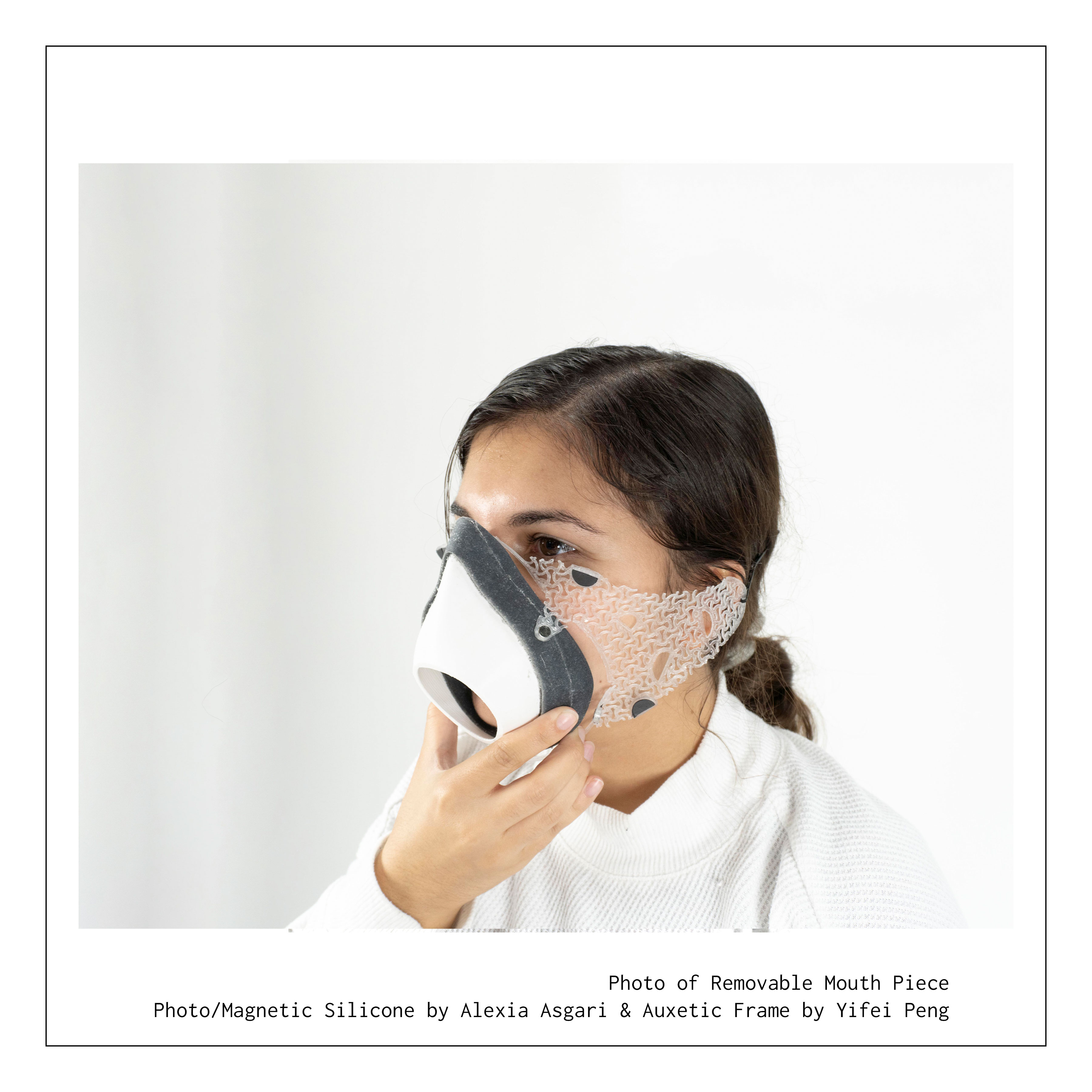
FaceX features a rigid detachable hull which houses a removable, disposable filter over the nose and mouth of the user. This project enabled further material exploration through the development of a magnetic silicone which snuggly seals around the face, and allows for easy attachment/detachment from the auxetic frame.

To accommodate the need for mass distribution and individual customization, FaceX masks may be ordered via an app. Personal user smart phones allow for individuals to record photogrammetric scans to surprising accuracy. Delivery tracking can also be viewed in app. Pictured to the left is a potential user interface design for the FaceX product.